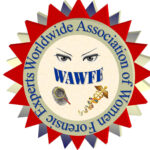Building Bridges: A Multidisciplinary Approach to Repatriating Unidentified Indigenous Remains
Home » Building Bridges: A Multidisciplinary Approach to Repatriating Unidentified Indigenous Remains
- Session
Building Bridges: A Multidisciplinary Approach to Repatriating Unidentified Indigenous Remains
- September 19, 2023 //
- 11:00 am -
- 11:25 am //
- Hyatt Regency at the Colorado Convention Center, Centennial Ballroom
The intersection between identifying human remains that may be of Native American ancestry, and genetic testing, is one that is fraught with misunderstandings and cultural insensitivities. As the numbers of missing and murdered Indigenous persons (MMIP) continues to rise, the ability to bridge the world of forensic identification and cultural respect is becoming one that is necessary to form. In 2016 alone, there were 5,712 Native American women and girls reported missing, however, this number is undoubtedly underreported. And yet, in Montana, when human skeletal remains are located that are estimated to be of Native ancestry, they are often sequestered, and additional testing is not completed for genetic identification. Why? The cultural values and understanding of some of the tribes in Montana, and across the United States, view DNA and destructive analyses of human remains to be deeply disrespectful to the dead. Additionally, due to unethical practices that range from the colonial history of the United States to recent questionable work by researchers, there is a deep mistrust in the donation of DNA to large databases and anyone outside of tribal entities. The combination of lack of testing and very few genetic comparisons make carrying out any genetic work difficult, even though the benefits of identifying unknown remains utilizing techniques such as forensic investigative genetic genealogy are plentiful.
Learning how to proceed requires the input and discussion from both Indigenous partners and laboratories willing to put in the work to enable culturally sensitive analyses. Additionally, maintaining data sovereignty for tribal entities is a key component for ensuring that tribal DNA is owned and protected by their own private communities. Attendees will learn more about the issue of unidentified Indigenous peoples in the United States, particularly in Montana, and how individuals at the University of Montana are working with local and distant tribes and other institutions to address concerns and facilitate education on all sides of the matter. The presentation also reviews the limitations of current DNA technologies used for unidentified human remains (UHR) identifications and the challenges to consider when applying advanced DNA technologies to this type of investigation. By bridging the gap between Indigenous communities and forensic genetics, we increase the possibility of bringing closure to the communities and families who have lost members to the ongoing epidemic that is MMIP.
The intersection between identifying human remains that may be of Native American ancestry, and genetic testing, is one that is fraught with misunderstandings and cultural insensitivities. As the numbers of missing and murdered Indigenous persons (MMIP) continues to rise, the ability to bridge the world of forensic identification and cultural respect is becoming one that is necessary to form. In 2016 alone, there were 5,712 Native American women and girls reported missing, however, this number is undoubtedly underreported. And yet, in Montana, when human skeletal remains are located that are estimated to be of Native ancestry, they are often sequestered, and additional testing is not completed for genetic identification. Why? The cultural values and understanding of some of the tribes in Montana, and across the United States, view DNA and destructive analyses of human remains to be deeply disrespectful to the dead. Additionally, due to unethical practices that range from the colonial history of the United States to recent questionable work by researchers, there is a deep mistrust in the donation of DNA to large databases and anyone outside of tribal entities. The combination of lack of testing and very few genetic comparisons make carrying out any genetic work difficult, even though the benefits of identifying unknown remains utilizing techniques such as forensic investigative genetic genealogy are plentiful.
Learning how to proceed requires the input and discussion from both Indigenous partners and laboratories willing to put in the work to enable culturally sensitive analyses. Additionally, maintaining data sovereignty for tribal entities is a key component for ensuring that tribal DNA is owned and protected by their own private communities. Attendees will learn more about the issue of unidentified Indigenous peoples in the United States, particularly in Montana, and how individuals at the University of Montana are working with local and distant tribes and other institutions to address concerns and facilitate education on all sides of the matter. The presentation also reviews the limitations of current DNA technologies used for unidentified human remains (UHR) identifications and the challenges to consider when applying advanced DNA technologies to this type of investigation. By bridging the gap between Indigenous communities and forensic genetics, we increase the possibility of bringing closure to the communities and families who have lost members to the ongoing epidemic that is MMIP.



